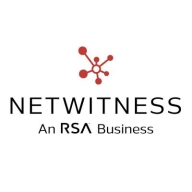

NetWitness NDR and Sangfor Endpoint Secure are two prominent solutions in the security market. Users are generally more satisfied with the features and support of NetWitness NDR, although Sangfor Endpoint Secure is often viewed as more cost-effective and user-friendly.
Features: NetWitness NDR is praised for its advanced threat detection capabilities, comprehensive network visibility, and ability to correlate data from multiple sources. Sangfor Endpoint Secure is favored for its robust endpoint protection, malware detection, and response speed. The main difference is NetWitness’s network-wide focus versus Sangfor’s endpoint-specific features.
Room for Improvement: Users suggest that NetWitness NDR could enhance its scalability, simplify certain administrative tasks, and improve user interface intuitiveness. Sangfor Endpoint Secure could benefit from more frequent updates, improved integration with third-party tools, and expanded reporting capabilities. The differential lies in NetWitness requiring better scalability and Sangfor needing better update frequency.
Ease of Deployment and Customer Service: NetWitness NDR users report a more complex deployment process but commend the extensive customer service assistance available. Sangfor Endpoint Secure is noted for its straightforward deployment and responsive support team. The primary difference is NetWitness’s complexity in deployment against Sangfor's ease of setup.
Pricing and ROI: NetWitness NDR is often seen as pricier, with a good but slower ROI. Users appreciate the long-term benefits despite initial costs. Sangfor Endpoint Secure is highlighted for its cost-effectiveness and quicker ROI. The distinction lies in NetWitness’s higher upfront costs but long-term value, contrasted with Sangfor’s affordability and faster returns.
| Product | Market Share (%) |
|---|---|
| Sangfor Endpoint Secure | 0.7% |
| NetWitness NDR | 0.5% |
| Other | 98.8% |


| Company Size | Count |
|---|---|
| Small Business | 10 |
| Midsize Enterprise | 2 |
| Large Enterprise | 5 |
| Company Size | Count |
|---|---|
| Small Business | 5 |
| Midsize Enterprise | 3 |
| Large Enterprise | 3 |
Using a centralized combination of network and endpoint analysis, behavioral analysis, data science techniques and threat intelligence, NetWitness NDR helps analysts detect and resolve known and unknown attacks while automating and orchestrating the incident response lifecycle. With these capabilities on one platform, security teams can collapse disparate tools and data into a powerful, blazingly fast user interface.
Organizations use Sangfor Endpoint Secure for endpoint protection and security management, managing devices, servers, and networks against malicious threats. It also assists in blocking websites, managing infrastructure, applications, antivirus needs, and aids in migrating to cloud environments.
Sangfor Endpoint Secure offers end-to-end protection, incorporating file protection, AI detection, behavior analysis, access control, and ISP load balancing. It facilitates VM migration with minimal downtime and includes a dual-end user interface for creating firewall rules, uploading images, and configuring VM settings. Enhancements such as Hyper-V capabilities, policy certificates, honeypot features, and next-generation firewall integrations are available. However, Sangfor Endpoint Secure could improve on console management, reporting functionalities, public cloud migration support, navigation, VPN system issues, licensing, update management, transitioning processes, and incorporating healing capabilities.
What are its most important features?Sangfor Endpoint Secure is implemented across various industries to ensure comprehensive security management and protection. IT departments leverage its VM migration capabilities for seamless transitions to cloud environments. Healthcare organizations use it to secure sensitive patient data, while educational institutions utilize it for safeguarding academic records and personal information. Financial services employ it to protect critical transactional data and adhere to stringent compliance requirements.
We monitor all Endpoint Detection and Response (EDR) reviews to prevent fraudulent reviews and keep review quality high. We do not post reviews by company employees or direct competitors. We validate each review for authenticity via cross-reference with LinkedIn, and personal follow-up with the reviewer when necessary.